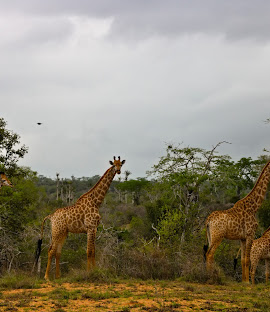Kissama National Park , Angola
🐘 Discover Kissama National Park: Angola’s Untamed Wilderness
Kissama National Park (also spelled Quiçama) is Angola’s greatest safari secret — a place where wildlife roams freely across vast savannahs, and breathtaking natural landscapes stretch to the Atlantic Ocean. Just a short drive from Luanda, it’s the perfect escape for nature lovers, photographers, and adventure seekers.
🌿 Why Visit Kissama National Park?
-
Home to "The Noah’s Ark Project"
Kissama became famous for its incredible conservation success — airlifting elephants and other animals from South Africa and Botswana to repopulate the park after Angola’s civil war. It's one of Africa’s most inspiring wildlife restoration stories! -
Wildlife Safaris
While Kissama is still growing compared to bigger parks like Kruger, visitors can spot:-
African elephants 🐘
-
Giraffes 🦒
-
Wildebeests 🦬
-
Zebras 🦓
-
Antelopes 🦌
-
Diverse bird species 🦅
-
-
Breathtaking Landscapes
The park features lush savannahs, dense forests, giant baobab trees, and coastal views along the Cuanza River — offering a dramatic and beautiful backdrop for safaris.
🚗 How to Get There
-
Distance: About 70 km (1.5–2 hours) south of Luanda.
-
Transport: Best reached by private tour, 4x4 rental, or organized safari groups departing from the city.
Tip: Combine your visit with a boat cruise on the Cuanza River for a full day of adventure!
🛖 Where to Stay
-
Kissama Eco Lodge
Charming thatched-roof chalets inside the park. Stay close to nature while enjoying comfortable amenities and organized safaris.
🦓 Best Things to Do
-
Morning and Evening Game Drives
Spot wildlife when animals are most active. -
River Cruises on the Cuanza River
See hippos, crocodiles, and colorful birds along the waterway. -
Photography Tours
Capture stunning shots of wildlife, landscapes, and epic African sunsets. -
Picnicking in Nature
There are safe zones where visitors can enjoy a meal surrounded by wild beauty.
📅 Best Time to Visit
-
Dry Season (May to October)
Ideal for wildlife spotting — animals gather around water sources, and roads are more accessible. -
🐾 In-Depth Travel Guide to Kissama National Park
🌍 A Conservation Miracle
After Angola's long civil war (1975–2002), much of the country’s wildlife was devastated.
Kissama became a symbol of hope when conservationists launched Operation Noah’s Ark — the largest animal translocation effort in African history.-
Over 1,000 animals were flown in from Botswana and South Africa.
-
Species like elephants, giraffes, wildebeests, and zebras were reintroduced to rebuild Angola’s wildlife heritage.
Today, Kissama stands as a living testimony to Angola’s resilience and environmental rebirth.
🦒 Wildlife You Might See
Kissama’s population is growing steadily.
Here’s what you might encounter:Animals Birds Reptiles Elephants African fish eagle Nile crocodiles Giraffes Kingfishers Monitor lizards Blue wildebeests Hornbills Various snakes Plains zebras Grey crowned cranes Roan antelopes Bee-eaters Bushbucks and Kudus Tip: Early morning and late afternoon are prime times for animal sightings!
🏕️ Accommodation Details
-
Kissama Lodge:
-
Rustic-chic chalets with private bathrooms and scenic views.
-
Restaurant serving local and international cuisine.
-
Organized game drives and boat safaris available directly through the lodge.
-
-
Camping Option:
-
Adventure seekers can also arrange camping safaris (with prior permission) to fully experience the African wild.
-
🚤 Add-On Adventure: Cuanza River Safari
-
Cruise the mighty Cuanza River — one of Angola’s most important waterways.
-
Spot hippos, crocodiles, exotic birds, and lush mangrove forests.
-
Many tours include a stop at Muxima, a famous religious pilgrimage site with a beautiful old church.
Tip: Sunset cruises are especially magical!
📜 Cultural Connection: Muxima Village
Close to Kissama, Muxima village is home to the Sanctuary of Our Lady of Muxima — one of Angola’s most important Catholic pilgrimage sites.
Thousands of faithful visit every year, and it’s a peaceful, spiritual stop to add cultural depth to your nature trip.
🌡️ Weather at Kissama
-
Dry Season (May–October): Best for safaris. Days are sunny and cooler (average 20–25°C / 68–77°F).
-
Rainy Season (November–April): Lush scenery, but some areas may be harder to reach due to muddy roads.
🎒 What to Pack for Kissama
-
Binoculars and camera
-
Neutral-colored, breathable clothing
-
Sunscreen, sunglasses, and a hat
-
Insect repellent (especially during rainy months)
-
Comfortable walking shoes or hiking boots
-
Water bottle and snacks
📸 Top Photography Spots
-
Cuanza River Estuary (wild mangrove forests and birds)
-
Baobab Tree Forests (iconic African scenery)
-
Savannah landscapes at sunset (dramatic skies and silhouettes)
-
Wildlife moments during game drives (bring a zoom lens!)
⚡ Bonus Tip
👉 Hire a local guide if possible — they know the hidden corners of the park where animals tend to gather, and they’ll enrich your safari with fascinating stories about the land, flora, and history.
-
⚡ Quick Travel Tips
-
Bring binoculars and a camera with a zoom lens.
-
Wear neutral-colored clothing for safaris.
-
Pack sun protection — the Angolan sun is strong!
-
Always book tours through reputable operators for safety.


